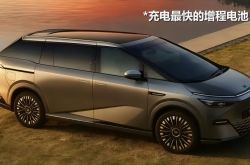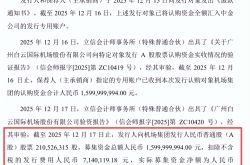New energy vehicles: A fragmented market with a bleak future in 2024?
![]() 09/12 2024
09/12 2024
![]() 462
462
As the sector experiences rapid penetration, the shift from supply-driven to demand-driven growth poses a significant challenge to the traditional investment logic focused on industry momentum.
In the new energy vehicle (NEV) industry, China has transitioned from a supply-driven to a demand-driven market over the past two years. If we take the second half of 2022, marked by the question "When Tesla's supply-demand contradiction dissipates, can it maintain its profitability per vehicle?" as a benchmark, few of the leading NEV companies that I closely follow have outperformed the industry average in terms of share price performance.

The rationale behind this is straightforward: Momentum investing typically targets sectors where new product demand surges rapidly, outpacing supply due to high barriers to entry or insufficient production capacity. This leads to explosive growth in earnings.
Momentum investing solely focuses on sustained marginal earnings growth, neglecting rational scale and industry structure considerations. Linear extrapolation almost always inflates stock prices. Thus, when the supply-demand inflection point arrives, the investment logic collapses, triggering a sharp decline in stock prices.
I. How much of the NEV narrative has materialized versus how much has fallen short after these tumultuous years?
II. Beyond the hype, where lies the core competitiveness of NEVs?
III. After two years of intense competition, where is the domestic NEV market headed?
IV. How should we approach investment opportunities in NEV manufacturers?
Detailed Analysis
I. How much of the electric vehicle revolution has become a reality?
The NEV narrative, fueled by Tesla and emerging automakers, revolves around electrification and intelligence. Ancillary narratives like vehicle functional diversification, monetization of existing fleets, and fleet operations have added depth to the story.
However, to date, only electrification has materialized. In China, the most vibrant NEV market, the vehicle remains primarily a mode of transportation rather than a fourth living space or a highly functional device akin to smartphones. As a result, it hasn't expanded beyond the existing automotive sales ceiling of roughly 20 million units annually, replacing existing vehicles rather than creating new demand.

Monetization efforts, whether through in-car entertainment systems or SaaS-based autonomous driving software, are still far from fruition (see my previous analysis on FSD and Tesla's valuation). Autonomous fleet operations, meanwhile, involve complex multi-sided internet business models encompassing autonomous driving technology, vehicles, users, and platforms, making their large-scale deployment even more challenging (stay tuned for my upcoming insights on autonomous taxi businesses).
II. Beyond the hype driven by beta testing, where lies the core competitiveness of NEVs?
As the NEV narrative largely boils down to the transition from combustion engines to electric motors, it's crucial to revisit the fundamentals of automaking: Does this business have barriers to entry, and if so, are they strong or weak? I addressed this question in my earlier analysis of Tesla, concluding that while electric vehicle manufacturing has barriers, they are relatively weak.
Without significant barriers akin to ASML's decade-long technological lead or Apple's closed ecosystem, NEV manufacturing reverts to a relatively generic branded manufacturing business with weaker barriers. Nevertheless, some barriers do exist, primarily in the form of:
a. Mass-market competitiveness through cost-effective scale production, leading to a virtuous cycle of lower prices and increased sales volumes. This barrier essentially stems from vertical integration and cost efficiency, as exemplified by BYD (see my analysis on BYD's final battle). Geely and other players are striving to catch up in this race.
b. Premium market competitiveness through strong brand appeal (e.g., Huawei, Tesla), sophisticated marketing and operations (e.g., Huawei, Xiaomi, NIO), robust distribution channels (e.g., Huawei, Xiaomi), and product differentiation (e.g., Lixiang Auto) that command brand premiums. In this segment, cross-industry players like Huawei and Xiaomi, with their strong channel networks and branding capabilities, have a high potential for late but rapid market penetration.
c. Players positioned between these two extremes may struggle to achieve steady growth unless they successfully expand into international markets.
III. Where is the domestic NEV market headed after two years of intense competition?
3.1) Market fragmentation intensifies
Based on the latest quarterly earnings reports, capital investments in the electric vehicle sector (excluding Tesla's additional expenditures on intelligent systems and including BYD, NIO, and Xpeng) have seen an overall reduction heading into 2024. Leading automakers like BYD and Tesla are wrapping up existing capacity expansion projects and focusing on overseas expansion, with industry-wide capacity expansion remain stagnant .
However, 2024 marks the official entry of cross-industry players into the NEV market, finally completing the competitive landscape. As these new players join the fray, the market share of established NEV giants has decreased rather than concentrated after two years of intense price competition:

This has shaped the 2024 supply-demand dynamic as follows:
a. Supply side: While no new capacity is being added, previously constructed facilities are gradually ramping up production, leading to an overall increase in market capacity.
b. Demand side: Without functional diversification to expand the market, NEV growth is constrained by the substitution of existing vehicles. Even with high penetration rates, growth is inevitably slowing down.
This supply-demand imbalance is evident in the following charts:
a. Increasing new vehicle launches vs. declining sales growth rates

b. Ambitious sales targets vs. subdued industry growth rates

3.2) "Bankruptcy-level" valuations coupled with "survival-driven" price cuts
Amid deflationary price wars, the entire industry has seen its valuations plummet. Listed NEV companies, despite years of losses, have managed to avoid bankruptcy thanks to high-valuation fundraising and continued financing channels. However, many have experienced steep valuation declines this year, with some, like NIO and Xpeng, trading at price-to-sales ratios below unity.

The pressure from valuation cuts and financing difficulties has led to "survival-driven" price cuts, as seen in Lixiang Auto's L6, NIO's Ledao, Xpeng's Mona, and widespread price wars across automakers.
These price cuts are "survival-driven" because maintaining cash flow, rather than gross margins, has become the top priority. Cash flow can be generated through favorable payment terms with suppliers, even at low prices, to ensure survival.

At this stage, the automotive industry resembles neither its current self nor the smartphone industry in 2015, where market concentration trends were visible. With unclear barriers and emerging players just entering the fray, predicting long-term winners remains challenging.

IV. How should we approach investment opportunities in NEV manufacturers?
In this competitive phase with unclear market leaders, selecting companies with strong valuation and earnings certainty is challenging. The investment strategy for NEV manufacturers boils down to:
a. Focus on companies with a high likelihood of staying in the game, such as BYD and Tesla, while considering their product offerings, input-output cycles, and providing adequate safety margins.
For these companies, I have provided in-depth analyses in the past. Interested readers can access them through Changqiao's platform under "Individual Stocks" -> "Panorama" -> "In-Depth Analysis".
b. For companies whose long-term prospects are unclear, consider investing during periods of "bankruptcy-level" valuations, provided they have sufficient cash reserves and a low risk of imminent bankruptcy. Look for marginal reversals and exit at opportune times.
While this approach may seem risky for novice investors, it can offer attractive returns for those with a deep understanding of the industry. The NEV sector, despite its challenges, still offers growth opportunities due to its rising penetration rates and overall industry growth rates of around 30%. This is more favorable than fully commoditized industries like e-commerce, where beta gains have dissipated and competition among leaders intensifies.
Moving forward, I will continue to search for structural opportunities within this 30% industry growth.
V. A crucial insight: Hybrid vehicles hold the key to further penetration gains
Given the current penetration rates across various price segments, the two key opportunities for significant penetration gains lie in the 5-20 RMB and above 30 RMB price ranges. However, the critical price band that contributes half of passenger car sales is the 10-15 RMB segment. Here, I believe hybrid vehicles will drive the next wave of penetration gains.

Why do I believe this? As we move beyond ultra-compact city cars priced below 60,000 RMB into the 10-15 RMB range, automakers encounter consumers who are highly price-sensitive and demand reliable range and convenience. For battery-electric vehicles (BEVs) to meet these demands:
1) Increasing battery capacity is challenging: Essentially, it requires cost reductions in batteries. My analysis of BEV price declines in the mass market shows that while prices have dropped by roughly 26,000 RMB from late 2022 to May 2024, battery cost reductions have largely offset these declines. In other words, the price cuts have primarily come from lower battery costs.

However, battery raw material costs, particularly lithium carbonate, have stabilized around 100,000 RMB/ton in 2024. Further cost reductions through raw material savings are limited. Without vertical integration models like BYD's, gross margins for BEVs in this price range remain deeply negative, limiting further price cuts.
,"Even in extreme scenarios where lithium carbonate prices halve to 50,000 RMB/ton (near historical lows), the potential cost savings for BEVs in this price range would be minimal (0.4-0.7 RMB per kWh), insufficient to bridge the price gap with range-extended electric vehicles (REEVs).
Moreover, significant cost reductions through battery technology innovations are unlikely in the near term, as current efforts focus on minor improvements in structure and assembly rather than breakthrough material innovations.


"2) Is fast charging a viable alternative? Not feasible in the short term, at least."
"In fact, when battery capacity cannot be increased, there are two options: fast charging and battery swapping."
"Due to the difficulty in standardizing battery swapping standards and the need for heavy asset investment, only a few mid-to-high-end pure electric vehicle brands such as NIO are currently engaged in battery swapping, with a limited number of swapping stations and no offerings specifically targeted at pure electric vehicles priced between 50,000 and 150,000 yuan."
"Although the price range of 800V fast-charging vehicles has decreased this year, the lowest starting price is still in the 150,000-200,000 yuan range (the starting price of the NIO C16 is 161,800 yuan)."
"Unless there is a significant breakthrough in battery technology - significantly increasing range without increasing battery costs, or if 800V ultra-fast charging can continue to lower prices below 150,000 yuan to address range anxiety."
"Looking at the relative advantages of hybrids in this price range:"
"1) Price Difference"
"Comparing the price difference between hybrid and pure electric versions of the same model from automakers, hybrids are generally 3,000 to 40,000 yuan cheaper than pure electric vehicles."
"In terms of starting prices, which consumers care more about, let's take BYD, the leader in hybrids, as an example. The price difference between BYD's hybrid and pure electric models has widened from 10,000 to 30,000 yuan last year to 10,000 to 40,000 yuan in 2024, with the most popular hybrid, the Qin Plus Dmi, starting at a 30,000 yuan premium in 2024!"
"The core reason for this price difference lies in the lower battery capacity and cheaper batteries of hybrid models, but consumers in this price range demand greater cost-effectiveness. Plug-in hybrids offer a more cost-effective option compared to pure electric vehicles in terms of purchase cost."

"2) Range Anxiety-Free"
"Currently, pure electric vehicles priced between 50,000 and 150,000 yuan in the market have an average driving range of only 400-500 km, while plug-in hybrids can exceed 1,000 km. Pure electric vehicles have an inherent 'bug' in driving range."
"The core users in this price range tend to reside in lower-tier cities with inadequate charging infrastructure, where charging convenience is still a significant issue, leading to higher demands for driving range."
"Combining factors 1) and 2), from a demand perspective, pure electric vehicles in the same price range significantly lag behind hybrids, which have lowered their price range to 50,000-150,000 yuan, in terms of both overall driving range and interior space (due to the high cost of pure electric batteries, it is difficult to further lower prices, resulting in pure electric A0-class models competing with hybrid A-B-class models in the same price range)."

"Automakers whose vehicles fall within this price range have recognized the dual benefits of sales and gross margins offered by plug-in hybrids in this segment. They have begun shifting to this area, introducing extended-range and plug-in hybrid models since early 2023. The main players in this segment remain BYD, Changan, Geely, and NIO."

"In terms of competition among plug-in hybrid brands targeting this price range, the core is cost-scale effect. Only automakers that can offer lower prices for similar product performance and maintain high management efficiency will emerge victorious in the 'plug-in hybrid market share battle.' Therefore, extending my previous in-depth analysis of BYD, the core strong contender remains BYD, with opportunities to increase penetration through its vertically integrated cost and scale advantages."
"5.2) Above 300,000 yuan: Premium branding and marketing strategies"
"Compared to the hardcore requirements of cost and scale effects below 200,000 yuan, the premium market above 300,000 yuan is characterized by lower sales but higher profits. The core lies in building brand recognition, which, if successful, can lead to a downward shift in price ranges (similar to Huawei's Honor brand). This approach is more long-term."
"Enhancing product premium and converting BMW, Benz, and Audi customers requires both product strength and brand power (differentiated product positioning + brand recognition). For example, Li Auto's oversized product definition, Seres' reliance on Huawei's brand, channels, and intelligent driving capabilities, and NIO's high-quality service. All aim for higher pricing, but brand building upwards is challenging, with attempts by BYD and XPeng largely unsuccessful."
"Due to the soft threshold of brand recognition, only a few plug-in hybrid brands have established a foothold in this price range, including AITO, Li Auto, and Denza D9, maintaining a relatively stable landscape. In the premium pure electric segment, only NIO remains as brands and models move downwards, reducing competition compared to the 200,000-300,000 yuan range."

"Regarding opportunities for these companies, I focus on:"
"a. Changes in their market share within the premium segment."
"b. Whether these premium automakers can generate marginal growth by shifting price ranges, given that market penetration has already exceeded 40% in this segment, limiting further penetration gains."
"Given the relatively stable landscape in the premium new energy vehicle market, I believe there are still significant opportunities in 2025. However, rather than focusing on high growth opportunities similar to 2024, I am more interested in the downward shift in price ranges and new categories introduced by premium brands."
"For instance, can NIO's Ledo division experience explosive growth? Can Li Auto rejuvenate itself with pure electric offerings? Will AITO's lower-priced products become bestsellers?"

"In other price ranges, such as 150,000-200,000 yuan, pure electric vehicles may have some opportunities, primarily due to limited model supply growth this year and the availability of 800V fast-charging vehicles in this price range."

"However, in the 200,000-300,000 yuan range, Tesla has traditionally dominated, with high penetration and intense competition due to the concentration of 800V and standard intelligent driving products. Price erosion by premium brands will also first affect this segment."


"The only opportunity lies in Chinese automakers eroding Tesla's share as its models age. However, Tesla has a strong pricing anchor in this segment, making it difficult to offer a price advantage. Instead, automakers must compete by offering better configurations at the same price, which involves higher costs that eat into profits."
"In terms of material cost reductions (battery cost reductions), these have largely concluded this year, meaning future 'specs wars' will genuinely erode profits."
"Summarizing structural investment opportunities in Part 4, in the 100,000-150,000 yuan range, focus on opportunities for BYD. In the above 300,000 yuan range, I am more interested in reversal opportunities arising from extreme valuations and brand/price range shifts."
"As I have previously analyzed BYD's opportunities in detail, I will not repeat them here. Instead, I will focus on reversal opportunities for NIO in the new energy vehicle industry in my next analysis. Stay tuned."





